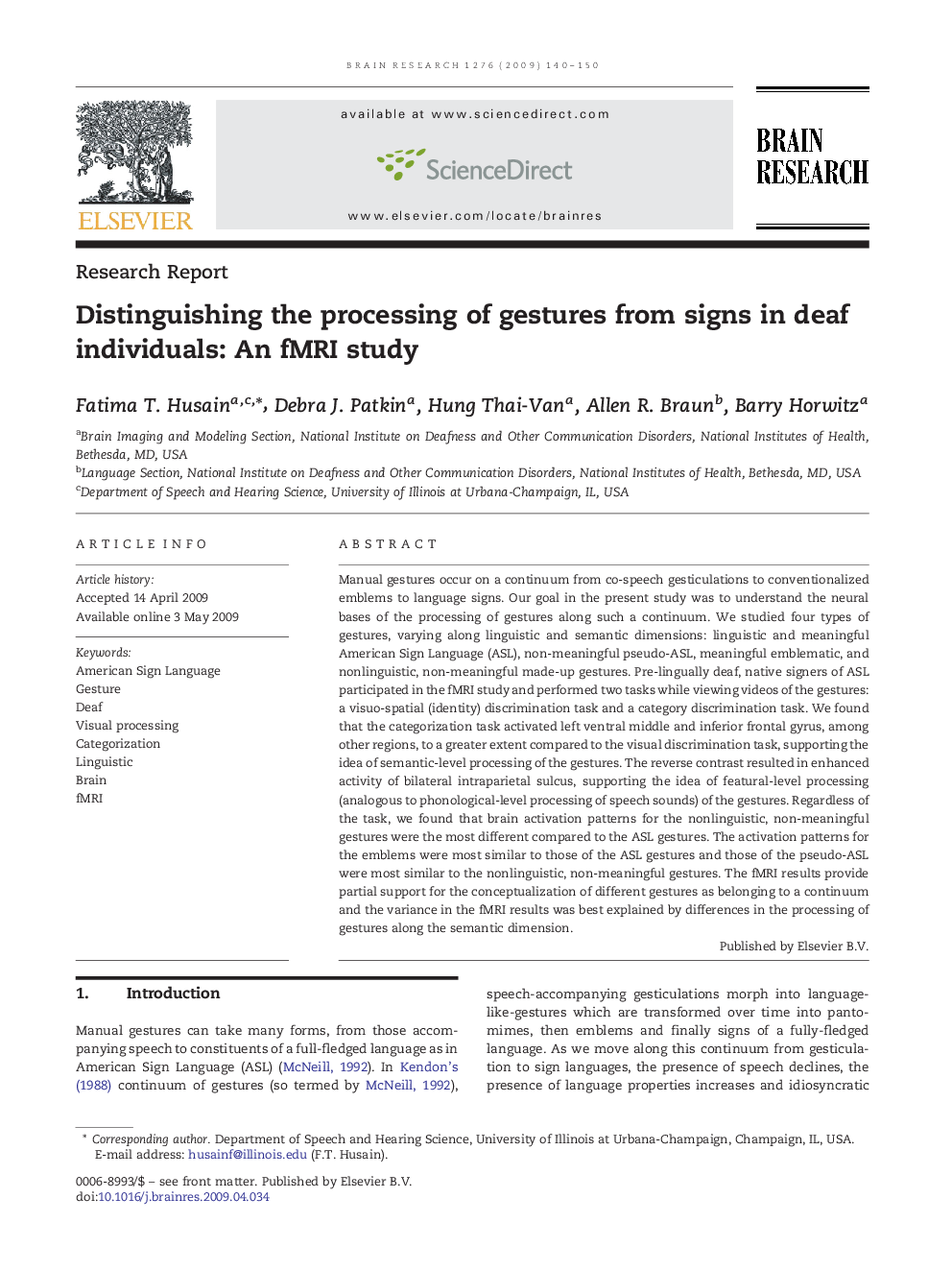| Article ID | Journal | Published Year | Pages | File Type |
|---|---|---|---|---|
| 4328183 | Brain Research | 2009 | 11 Pages |
Manual gestures occur on a continuum from co-speech gesticulations to conventionalized emblems to language signs. Our goal in the present study was to understand the neural bases of the processing of gestures along such a continuum. We studied four types of gestures, varying along linguistic and semantic dimensions: linguistic and meaningful American Sign Language (ASL), non-meaningful pseudo-ASL, meaningful emblematic, and nonlinguistic, non-meaningful made-up gestures. Pre-lingually deaf, native signers of ASL participated in the fMRI study and performed two tasks while viewing videos of the gestures: a visuo-spatial (identity) discrimination task and a category discrimination task. We found that the categorization task activated left ventral middle and inferior frontal gyrus, among other regions, to a greater extent compared to the visual discrimination task, supporting the idea of semantic-level processing of the gestures. The reverse contrast resulted in enhanced activity of bilateral intraparietal sulcus, supporting the idea of featural-level processing (analogous to phonological-level processing of speech sounds) of the gestures. Regardless of the task, we found that brain activation patterns for the nonlinguistic, non-meaningful gestures were the most different compared to the ASL gestures. The activation patterns for the emblems were most similar to those of the ASL gestures and those of the pseudo-ASL were most similar to the nonlinguistic, non-meaningful gestures. The fMRI results provide partial support for the conceptualization of different gestures as belonging to a continuum and the variance in the fMRI results was best explained by differences in the processing of gestures along the semantic dimension.
